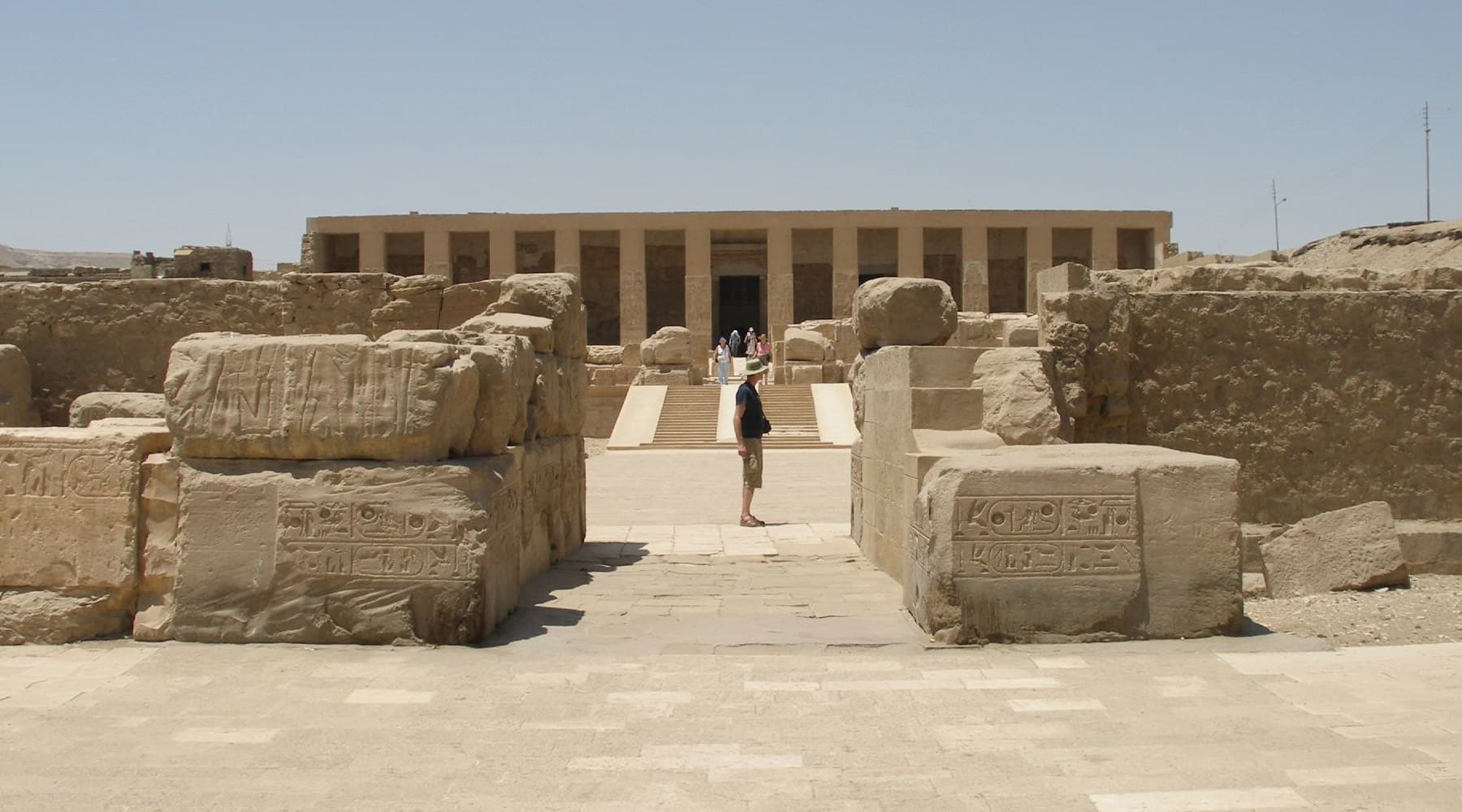
The Temple of Seti I, located in Abydos, Egypt, is a marvel of ancient architecture and an important historical landmark. This magnificent temple, dedicated to the Pharaoh Seti I, showcases the grandeur and artistic talents of ancient Egyptians. Stepping into this sacred space is like stepping back in time, immersing oneself in the rich tapestry of ancient Egyptian culture and religious beliefs.
In this article, we will delve into the fascinating world of the Temple of Seti I and uncover 13 unbelievable facts that make this site truly remarkable. From its intricate carvings and hieroglyphic inscriptions to its connection with ancient Egyptian mythology and legends, we will explore the hidden secrets that make this temple a must-visit destination for history buffs, archaeology enthusiasts, and anyone seeking to unravel the mysteries of the past.
Key Takeaways:
- The Temple of Seti I in Abydos, Egypt, is a well-preserved ancient site with stunning carvings, honoring multiple deities, and showcasing the military campaigns of Pharaoh Seti I.
- Visitors can explore the hypostyle hall, see the Abydos King List, and admire the polychrome reliefs, gaining valuable insights into ancient Egyptian culture and history.
The Temple of Seti I is located in the city of Abydos.
The temple, dedicated to the pharaoh Seti I, is situated in Abydos, an ancient city in Upper Egypt. It is one of the most well-preserved and significant archaeological sites in the country.
The construction of the temple began around 1290 BCE.
Under the reign of Seti I, the construction of the temple complex began. It was completed during the reign of his son, Ramesses II, around 1224 BCE.
The walls of the temple are adorned with intricate carvings and hieroglyphics.
Visitors to the Temple of Seti I are awe-struck by the remarkable craftsmanship displayed on its walls. The intricate carvings and hieroglyphics depict various scenes from Egyptian mythology, religious rituals, and historical events.
The temple is dedicated to multiple Egyptian deities.
The Temple of Seti I is not solely dedicated to the pharaoh himself. It also honors several Egyptian deities, including Osiris, Isis, Horus, and Amun-Ra.
One of the most remarkable features of the temple is the hypostyle hall.
The hypostyle hall in the Temple of Seti I is a marvel of ancient architecture. It is filled with massive columns intricately decorated with detailed reliefs, creating a grand and imposing atmosphere.
It is believed that the temple was built on top of an older religious structure.
Archaeologists have discovered evidence suggesting that the Temple of Seti I was constructed on top of a pre-existing religious site, indicating the significance of the location throughout different periods of Egyptian history.
The temple is connected to the ancient Osireion.
The Temple of Seti I is linked to the Osireion, a mysterious underground structure dedicated to the god Osiris. The connection between the two sites adds to the intrigue and fascination surrounding the temple complex.
The walls of the temple depict the rituals and ceremonies performed by pharaohs.
The detailed carvings on the walls provide a glimpse into the religious rituals and ceremonies conducted by the pharaohs. These scenes offer valuable insights into the ancient Egyptian belief system and the role of pharaohs as divine rulers.
The Temple of Seti I was discovered in the early 19th century by archaeologists.
The temple remained buried under sand and debris for centuries until its rediscovery in the early 19th century by a team of dedicated archaeologists. Its excavation has greatly contributed to our understanding of ancient Egyptian culture and history.
Visitors can see the famous Abydos King List within the temple.
The Abydos King List, a significant historical document listing the names of Egyptian pharaohs, can be found within the Temple of Seti I. It serves as a valuable resource for researchers and historians studying the chronology of ancient Egyptian rulers.
The temple is renowned for its stunning polychrome reliefs.
The Temple of Seti I showcases beautifully colored reliefs, where remnants of the original vibrant pigments can still be seen today. These polychrome reliefs add another layer of beauty to the already magnificent architecture.
The hieroglyphics in the temple tell stories of the pharaoh’s military campaigns.
Among the many scenes depicted in the hieroglyphics, some detail the military conquests and campaigns carried out by Seti I. This provides valuable historical information about the pharaoh’s reign and the expansion of the Egyptian empire during that time.
The Temple of Seti I is considered a masterpiece of ancient Egyptian art and architecture.
With its impressive design, intricate carvings, and historical significance, the Temple of Seti I is widely recognized as a masterpiece of ancient Egyptian art and architecture. It stands as a testament to the advanced skills and craftsmanship of the ancient Egyptians.
In conclusion, the 13 Unbelievable Facts About Temple of Seti I highlight the historical, artistic, and architectural significance of this ancient Egyptian temple. From its intricate carvings and hieroglyphics to its connection with the Osireion, the temple offers a fascinating glimpse into the complexities of ancient Egyptian civilization. To truly appreciate its wonders, one must visit the Temple of Seti I and marvel at the incredible achievements of the past.
Conclusion
In conclusion, the Temple of Seti I is a truly remarkable landmark with a rich history and many intriguing facts. From its breathtaking architecture to its intricate carvings, this temple offers visitors a glimpse into the ancient Egyptian civilization. The temple’s connection to one of Egypt’s greatest pharaohs, Seti I, only adds to its allure.The Temple of Seti I stands as a testament to the skill and expertise of the ancient Egyptians in constructing magnificent structures that have withstood the test of time. It serves not only as a place of worship but also as an important historical and cultural icon.Visiting the Temple of Seti I is a journey back in time, allowing visitors to immerse themselves in the ancient world and experience the wonder of Egyptian civilization firsthand. Whether you are an avid history enthusiast or simply appreciate stunning architectural marvels, this temple is a must-visit destination.
FAQs
1. How old is the Temple of Seti I?
The Temple of Seti I dates back to the 13th century BC, making it over 3,000 years old.
2. Can visitors enter the Temple of Seti I?
Currently, visitors are not allowed to enter the inner chambers of the temple due to preservation efforts. However, the outer courtyards and impressive façade can still be explored.
3. What is the significance of Seti I?
Seti I was one of the greatest pharaohs of ancient Egypt and his reign marked a period of prosperity and expansion. His temple was built to honor the Egyptian god Amun-Ra and to solidify his authority as a powerful ruler.
4. How long did it take to construct the Temple of Seti I?
The construction of the temple took approximately 30 years, from around 1290 BC to 1260 BC.
5. Are there any famous inscriptions or carvings inside the temple?
Yes, the temple is renowned for its intricate and well-preserved carvings. The most famous among them is the “Abydos King List,” a detailed list depicting the names of seventy-six pharaohs who ruled Egypt until that time.
6. Is the Temple of Seti I accessible for people with disabilities?
The temple may present accessibility challenges as it has uneven surfaces and stairs. However, efforts have been made to improve accessibility, including ramps in certain areas. It is advisable to check with the site authorities beforehand for specific information.
7. Are photography and filming allowed inside the temple?
Yes, photography and filming are generally allowed inside the temple for personal use. However, the use of flash photography or tripods may be restricted, and there may be additional charges or permits required for commercial filming or photography.
Unraveling the enigmatic Temple of Seti I leaves you yearning for more ancient Egyptian wonders. Satisfy your curiosity by exploring the mesmerizing Tomb of Seti I, where breathtaking artwork and hidden chambers await. Each site holds unique stories waiting to be told.
Was this page helpful?
Our commitment to delivering trustworthy and engaging content is at the heart of what we do. Each fact on our site is contributed by real users like you, bringing a wealth of diverse insights and information. To ensure the highest standards of accuracy and reliability, our dedicated editors meticulously review each submission. This process guarantees that the facts we share are not only fascinating but also credible. Trust in our commitment to quality and authenticity as you explore and learn with us.


